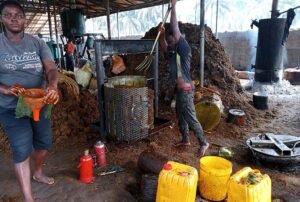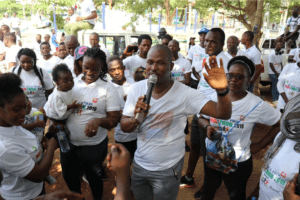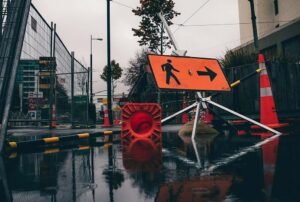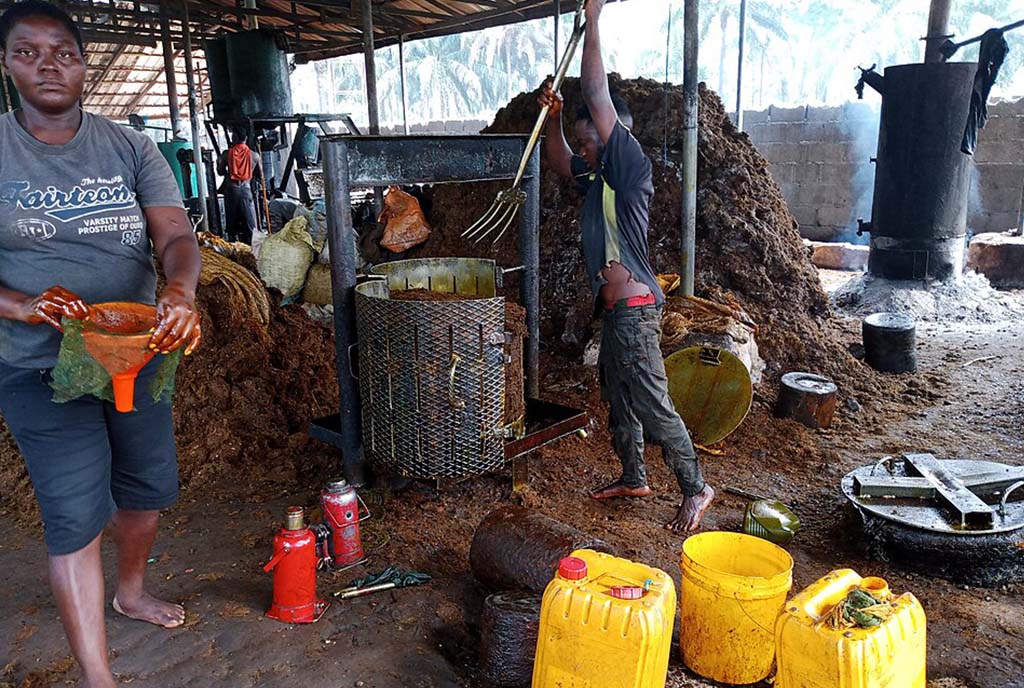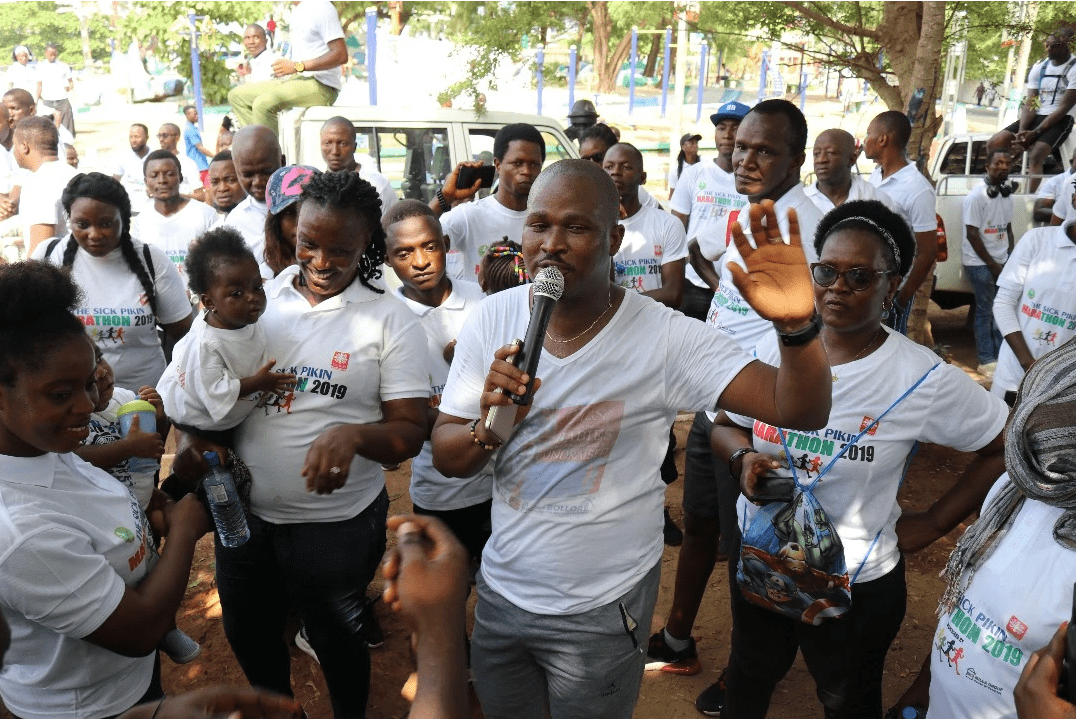
The tree is everywhere in Ohio: dotting the sides of highways, lining the streets of residential neighborhoods. It spreads fast, its leaves full. In the spring, its white blossoms overwhelm the landscape. It’s the Bradford pear—and it’s illegal.
Ohio is the latest state to ban the tree, joining Pennsylvania and South Carolina. The states are fighting the spread of the invasive tree, a variant of the Callery pear, derived from a species native to China and Vietnam. It’s not simply the rapid proliferation that the states object to; the tree crowds out native species, denying them sunlight. Insects don’t live in the Bradford pears, so there’s nothing for birds to eat—though birds do like to consume the trees’ fruit, which contributes to their unparalleled spread. The fast-growing limbs of the trees are weak, which means they can break off easily, injuring people and property.
“The Bradford pear would embody that quintessentially American idea of the goodness of mass-produced uniformity.”
Many of the Bradford pears now seen in Ohio are “volunteers.” They weren’t intentionally planted, and because they are what’s known as “offspring” plants, they have objectionable traits that would have been cultivated out. These traits include, as a Tennessee newspaper, the Oak Ridger, wrote, “three-inch-long thorns that can puncture tractor tires.” The trees cluster densely together in nearly impassable thickets. “Even goats avoid these areas,” according to the Oak Ridger.
The illegality of the tree in Ohio and elsewhere means that it’s against the law to plant, sell, or grow the trees in these states. But one Ohio nonprofit is taking the fight against the invasive species a step further. It’s calling for a commitment from volunteers, and it’s asking them to participate in community.
The American Dream Tree
The rise of the Bradford pear has its roots in the United States Department of Agriculture. The USDA facility in Maryland popularized the ornamental tree, attractive to housing developers and landscapers because it was cheap and hardy enough for transport. And—the strength that would become our downfall—it grew fast.
The role of trees in fighting climate change is clear.
Poor-quality soil, wet or dry conditions: the Bradford pear didn’t care. As the Washington Post wrote, “It shrugged off pests and diseases, it didn’t drop messy fruit like mulberries or crab apples.” We now recognize fruit trees in urban areas as an aspect of food justice, providing free and easily available sustenance to communities where people (including people who are unhoused) can pluck healthy food from plants on the street.
But in the 1950s and 60s, the Bradford pear was a symbol of conformity, planted in neat rows in planned neighborhoods and aggressively pruned (which helped hide those thorns). Unmessy and seemingly uncomplicated, the tree “would come to signal the dream and aspirations of postwar suburbia,” the Washington Post wrote. “Like the cookie-cutter suburbs themselves, the Bradford pear would embody that quintessentially American idea of the goodness of mass-produced uniformity.”
The Climate Justice Connection
The role of trees in fighting climate change is clear: we need trees to remove carbon dioxide, which warms the atmosphere, from the air. We need them to store carbon in their tissue, including in their roots and in the soil. And we need them to provide shade and cooler temperatures, increasingly urgent as the planet heats up at an alarming pace.
NPQ has reported on how heat is now the number one killer when it comes to climate and how trees play an essential role in helping keep temperatures down. In cities, trees can make the difference between community members, including children, being able to go outside. Shade trees also help reduce heat-related illnesses like heatstroke and worsening asthma symptoms. NPQ reported on a study published in Environmental Pollution, which found that “urban trees in the United States prevented 850 premature deaths along with 670,000 incidents of acute respiratory distress in one year alone. The study estimated the yearly health benefits of trees were worth nearly $7 billion.”
Sign up for our free newsletters
Subscribe to NPQ's newsletters to have our top stories delivered directly to your inbox.
By signing up, you agree to our privacy policy and terms of use, and to receive messages from NPQ and our partners.
Trees are a matter of climate justice; inequitable access to nature still plagues much of the country. In this regard, the Bradford pear does help. It is still a tree that offers some cool shade, after all (if one is able to wrestle through the thorns to stand beneath it). It does capture carbon. But it does so at the expense of native species.
The Role of Community
The Ohio nonprofit Friends of the Lower Olentangy Watershed (FLOW) is fighting the trees with trees. This fall, the group is launching an initiative to give away over 1,500 free trees to state residents. The trees in the giveaway are native, including American beech and sweetgum trees.
What makes this program different from other tree planting initiatives is its distribution. FLOW is looking for “safe” homes for the trees. In other words, it’s not enough to simply put a sapling in a hole in the ground and walk away, hoping for the best. The trees need a location where they can reasonably flourish, and they need people looking after them long-term: protecting them and watering them. The nonprofit is calling this role “tree ambassadors” and it entails “taking responsibility for an amount of trees (for example, 15 trees).” The seedlings will have been started and cared for in a nursery, but the first year of life is crucial for a tree’s growth and success, which is where the volunteers come in.
“They left an environmental time bomb that has now exploded.”
The nonprofit isn’t expecting ambassadors to do this job alone. Like most projects done for the benefit of a community, the community itself needs to participate. The nonprofit is calling for volunteers not to keep trees for their own yards but to pass them on: “distributing them to your neighbors through word of mouth, public engagement, social media, or any way that you believe is best!”
FLOW, which helps protect a 32-mile stretch of Ohio’s Olentangy River and the land surrounding it, including the capital city of Columbus, hopes local networks will help, such as churches and schools. Cities like Columbus are in dire need of trees.
“Because Columbus is developing so much, it’s one of the most rapidly growing urban heat islands in the country,” according to Josephine Cacciato, a fellow at FLOW. “Urban heat islands are just a space where there’s so much focus and there’s a lot of people and energy that temperatures rise, and they can rise by 10s of degrees.”
Cacciato said, “Neighborhoods with less tree canopy can be up to 10 degrees hotter on the same time as day as one with better tree canopy.” The nonprofit, climate scientists, and arborists alike hope those canopies can increasingly be made up of native trees.
As the Washington Post wrote, “The U.S. Agriculture Department scientists who gave us the Bradford pear thought they were improving our world. Instead, they left an environmental time bomb that has now exploded.” That’s one that volunteers are trying to clean up, one native sapling at a time.



